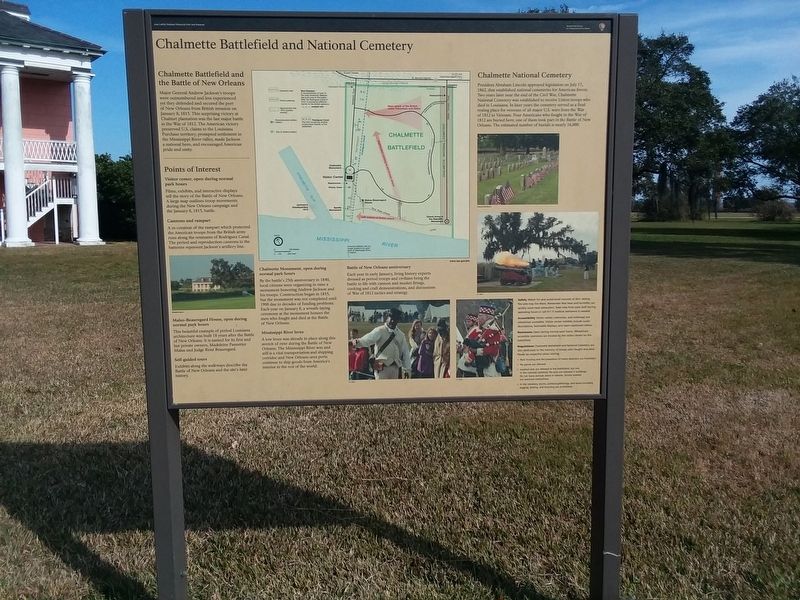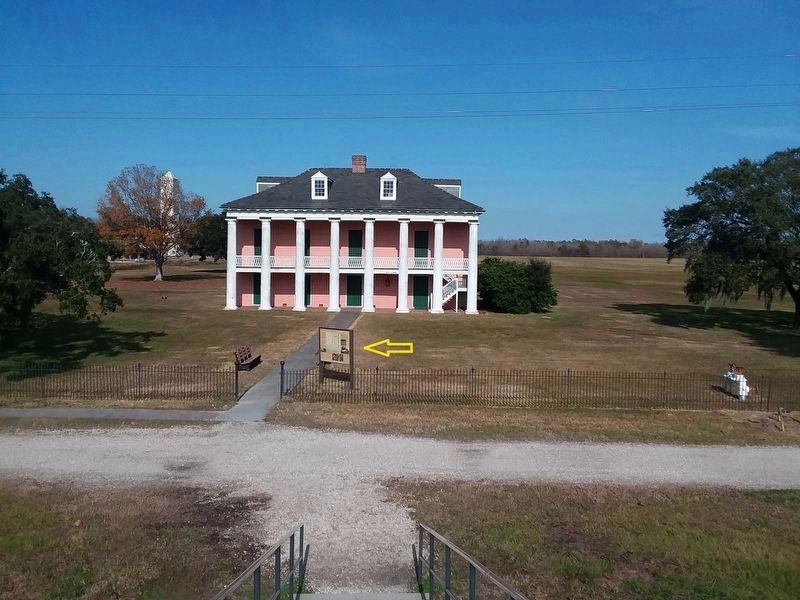Chalmette Battlefield And National Cemetery
Jean Lafitte National Historical Park
Chalmette Battlefield and the Battle of New Orleans
Major General Andrew Jackson's troops were outnumbered and less experienced yet they defended and secured the port of New Orleans from British invasion on January 8, 1815. This surprising victory at Chalmet plantation was the last major battle in the War of 1812. The American victory preserved U.S. claims to the Louisiana Purchase territory, prompted settlement in the Mississippi River valley, made Jackson a national hero, and encouraged American pride and unity.
Chalmette National Cemetery
President Abraham Lincoln approved legislation on July 17, 1862, that established national cemeteries for American forces. Two years later near the end of the Civil War, Chalmette National Cemetery was established to receive Union troops who died in Louisiana. In later years the cemetery served as a final resting place for veterans of all major U.S. wars from the War of 1812 to Vietnam. Four Americans who fought in the War of 1812 are buried here; one of them took part in the Battle of New Orleans. The estimated number of burials is nearly 16,000.
Points of Interest
Visitor center, open during normal park hours
Films, exhibits, and interactive displays
tell the story of the Battle of New Orleans.
A large map outlines
Cannons and rampart
A re-creation of the rampart which protected
the American troops from the British army
runs along the remnants of Rodriguez Canal.
The period and reproduction cannons in the
batteries represent Jackson's artillery line.
Malus-Beauregard House, open during normal park hours
This beautiful example of period Louisiana
architecture was built 18 years after the Battle
of New Orleans, It is named for its first and
last private owners, Madeleine Pannetier
Malus and Judge René Beauregard.
Self-guided tours
Exhibits along the walkways describe the Battle of New Orleans and the site's later history.
Chalmette Monument, open during normal park hours
By the battle's 25th anniversary in 1840,
local citizens were organizing to raise a
monument honoring Andrew Jackson and
his troops. Construction began in 1855,
but the monument was not completed until
1908 due to decades of funding problems.
Each year on January 8, a wreath-laying
ceremony at the monument honors the
men who fought and died at the Battle
of New Orleans.
Mississippi River levee
A low levee was already in place along this
stretch of river during the Battle of New
Orleans. The Mississippi River was and
still is a
Battle of New Orleans anniversary
Each year in early January, living history experts
dressed as period troops and civilians bring the
battle to life with cannon and musket firings,
cooking and craft demonstrations, and discussions
of War of 1812 tactics and strategy.
Erected by National Park Service, Department of the Interior.
Topics. This historical marker is listed in these topic lists: Parks & Recreational Areas • War of 1812. A significant historical date for this entry is January 8, 1815.
Location. 29° 56.42′ N, 89° 59.658′ W. Marker is in Chalmette, Louisiana, in St. Bernard Parish. Marker is on River Road, on the right when traveling north. Located at the Malus-Beauregard House Visitors Center. Touch for map. Marker is in this post office area: Chalmette LA 70043, United States of America. Touch for directions.
Other nearby markers. At least 8 other markers are within walking distance of this marker. The Malus-Beauregard House (here, next to this marker); After the Battle (a few steps from this marker); The West Bank Assault (about 300 feet away, measured in a direct line); Battery One and Forward Redoubt (about 300 feet away); Attack Along the River (about 300 feet away);
Additional commentary.
1. Duplicate marker.
This is a duplicate marker of one on the east side of the battlefield park.
Credits. This page was last revised on December 4, 2020. It was originally submitted on December 4, 2020, by Craig Doda of Napoleon, Ohio. This page has been viewed 420 times since then and 76 times this year. Photos: 1, 2, 3. submitted on December 4, 2020, by Craig Doda of Napoleon, Ohio. • Mark Hilton was the editor who published this page.


